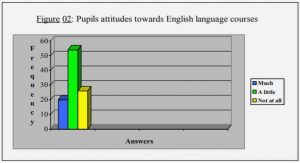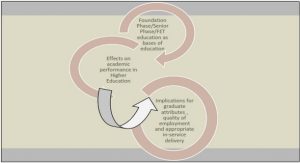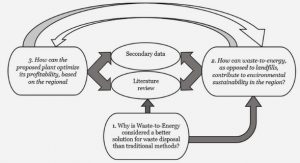Get Complete Project Material File(s) Now! »
Method
In this chapter, the choice of research perspective, approach and strategy will be presented as well as justification to these choices. Further, the process of data collection and analysis will be described followed by a section on how the authors have ensured the quality of the research.
Research Perspective
Understanding philosophical issues are essential to achieving the aims of a research thesis (Easterby-Smith et al., 2015). In research philosophy, many different approaches exist, and it is important to implement one that fits the given topic (Malhotra & Birks, 2007). The most commonly discussed approaches in this type of literature are either positivism or social constructivism (Easterby-Smith et al., 2015). There are some differences between the two approaches. Positivism takes the approach that only facts are relevant, the research has high structures and a static form (Malhotra & Birks, 2007). This type of research is especially suitable to test hypotheses or to answer a set of questions with prior established theoretical frameworks (Malhotra & Birks, 2007). At the other side of the spectrum, the social constructionist approach is more flexible in the views of the world (Malhotra & Birks, 2007). This approach is more appropriate to explore an area with little or none previous theoretical framework, and it is useful to provide insight or understand about specific topics, to generate new ideas (Malhotra & Birks, 2007).
Depending on the perspective chosen, a researcher decides between quantitative or qualitative research methods (Malhotra & Birks, 2007). Where the quantitative research is mostly connected to the positivist viewpoint, and qualitative studies usually take a constructionist view (Malhotra & Birks, 2007). In short, one could argue that the quantitative approaches are more suitable for testing given truths, such as a hypothesis. On the other hand, qualitative studies are more exploratory, thus are more suitable for forming new ideas or generalizations about a particular topic (Malhotra & Birks, 2007). Due to the nature of the chosen research topic, the authors have chosen a qualitative approach to this subject. For instance, there is lack of previous research, and thus there are some types of research philosophies that might be more suitable than others. Since the authors are interested in studying the beliefs, perceptions, and meaning, a qualitative study is most appropriate due to the flexibility (Kumar, 2011). Furthermore, since the aim is to explore less researched areas, the authors believe that the viewpoint of this thesis is constructionism, preferred over strong constructionism. The reasons behind this are that constructionism enables generalization beyond the sample (Easterby-Smith et al., 2015). Since the sample might be limited, allowing generalizing about a larger population is especially important to achieve the research aims. Generalizing about a population with limited sample size is always a risk and should be avoided. However, generalizations could be used if there are limited variations in the entire population, or where the study acts as a pilot for future research (Saunders, Lewis, & Thornhill, 2009). So, generalizing could be risky, but since the aim is to generate new ideas, this particular research perspective is suitable.
Research Approach
Induction looks at how researchers can take something or a combination of something and generalize broader than the actual research (Malhotra & Birks, 2007). Inductive research starts with finding an area of interest without looking into theoretical frameworks because it is seen as an inhibitor to creativity. The chosen issues within the interest come from observations or people in different contexts. Research participants then describe their view and nature of a certain issue in a context. From the descriptions, broad themes are found and then examined more thoroughly through in-depth questions and discussions. A researcher then tries to find links and common themes from the participants to build a model or theory. This means that an interpretivist researcher never reaches a conclusion with complete evidence. Instead, the conclusion is built from an analysis of the participant answers (Malhotra & Birks, 2007). Saunders et al., (2009) define inductive research as a way to gain an understanding of meanings that we as humans attach to certain events and where the context around the research is emphasized. It also let researchers have more flexibility to adapt and iterate the process along the way depending on what results that are found (Saunders et al., 2009). Deduction, on the other hand, looks at how a conclusion can be made from validating an already established theory or theoretical framework by setting some premises and testing them. If the premises are true then so is the conclusion (Malhotra & Birks, 2007). From the theoretical framework, hypotheses are set by identifying specific and relevant variables that need to be tested, and it is through these hypotheses and variables that a researcher can try to validate an existing theory on a subject (Malhotra & Birks, 2007).
Finding out how small fashion brick and mortar stores can create value for consumers through multiple channels requires a full understanding of how consumers perceive these channels, how they are shopping clothes now and want to shop in the future. This issue is inductive since the aim is to figure out how consumers think and not validating already established thoughts on the matter. Instead, the research participants shall describe their view of fashion retail, their shopping process and what they think of independent fashion brick and mortar stores. From these descriptions, themes are constructed and linked to be able to build insights for the stores on how they can cater to consumers on several channels and create a competitive advantage over their competitors.
Research Strategy – Grounded Theory
The inductive nature of this thesis makes the grounded theory a good choice of method. Grounded Theory was published by Glaser and Strauss in 1967 and is a systematic way to collect and analyze data in contrast to some less structured qualitative approaches like the ethnographic method (Malhotra & Birks, 2007). The goal of Grounded Theory is to build a theory that is grounded in empirical data. It is a simultaneous process where data collection and data analysis are interlinked and where the new and old data is continuously compared for the researcher to immerse themselves in the data to be able to make a better understanding of it (Easterby-Smith et al., 2015). A researcher using Grounded Theory from the Strauss perspective is active in the interrogation of the data, he or she also build the theory from both data and theory and gathers insights from many sources. If the researcher follows the Glaser approach then he or she will keep a distance and independence as a researcher, the data is believed to emerge from itself, and no insights are previously gathered (Easterby-Smith et al., 2015).
The authors believe that Grounded Theory more toward the Strauss perspective goes well in line with the research purpose and research questions since building insights for fashion brick and mortar retailers through customer understanding requires a collection of data in the form of views, processes, and thoughts from the participants and then create codes from it. The codes are then linked to create common categories which can then be linked to themes. Finally, a theory can be built from the themes which in this case ideally will be insights on how a small fashion brick and mortar store can create value for consumers to create a competitive advantage against online stores and larger retailers.
Data Collection
Semi-structured interviews
Qualitative research methods can be categorized into direct and indirect ways of getting the data (Malhotra & Birks, 2007). Direct can then be divided into group interviews (focus groups) and in-depth interviews. Indirect research is divided into observations and projective techniques (Malhotra & Birks, 2007).
Choosing between direct and indirect methods depends on the context of the research. Since direct research means having a non-disguised focus group or interview, a researcher needs to understand what consequences that openness will have (Malhotra & Birks, 2007). For example, the richness of the data could be lost if the participants know what the researcher wants to accomplish with the research. Openness about the research may or may not close the minds of the participant. This also works opposite ways, not giving a participant enough information about the research could also hinder them from fully giving the richest data possible (Malhotra & Birks, 2007). Hence, the research context is vital when choosing a data collection method.
For this thesis, in-depth interviews are chosen as the method for data collection. Malhotra and Birks (2007) define in-depth interviews as personal interviews that are both direct and unstructured where one participant is probed to find underlying beliefs, motivations, feelings, and attitudes on a specific topic. Easterby-Smith et al., (2015) define three types of structures on interviews. Highly structured market research interview, semi-structured guided open interview and unstructured ethnographic interview. The choice for structure in this thesis is semi-structured interviews because of the mix of following some structure while still having the freedom to ask follow-up questions and going deeper in specific topics (Easterby-Smith et al., 2015).
The authors have decided to use interviews for a number of reasons. Firstly, using interviews lets the researcher probe the participants to gain a deeper understanding and insights of the participants’ views and thoughts (Malhotra & Birks, 2007). Which in this case is interesting since how customers decide and choose shopping channels might be an individual choice, hence understanding it in an individual setting makes sense. Secondly, focus groups require the participants to be quite homogenous to have a good group discussion (Malhotra & Birks, 2007).
Interviews let the authors potentially understand a broader group of customers. Thirdly, interviews let a participant speak freely without social pressure or groupthink (Malhotra & Birks, 2007). Lastly, several interviews instead of just a couple of focus groups let the researcher reflect, experiment and learn along with the interviews (Malhotra & Birks, 2007).
Sampling
Many research projects aim to gather information about the characteristics of a population, and this could be done throughout a sample (Malhotra & Birks, 2007). As mentioned, the research will focus on the age group between 18-30 years old. The authors believe the most effective sampling procedure to achieve the research goal is to use a nonprobability sampling. The nonprobability sampling is relying on the researchers’ judgment rather than chance in the sample selection (Malhotra & Birks, 2007). Nonprobability sampling does not allow an objective evaluation of sample results (Malhotra & Birks, 2007). However, the authors do not wish to prove any statistical truths. Rather study people’s perspectives on fashion retail, to draw conclusions and generalizations that can be tested further. Therefore, the authors believe a nonprobability sampling is preferable over the probability sampling.
Furthermore, the authors have chosen to use convenience sampling, where the sampling selection is based on the researcher’s choice Malholtra and Birks (2007) and selecting sample units on account of how easily accessible they are (Easterby-Smith et al., 2015). Convenience sampling might not be preferable for other research approaches, but it can be used to generate ideas, insights or hypotheses to test further (Malhotra & Birks, 2007). Convenience sampling is good because it is less expensive and less time consuming than other sampling procedures (Malhotra & Birks, 2007). Due to the time constraint and the access, the authors have to the chosen demographic (see delimitations), convenience sampling is deemed to be the most effective. However, one must regard that convenience sampling has drawbacks, for instance, it could be biased (Malhotra & Birks, 2007).
1 Introduction
1.1 Background
1.2 Problem definition
1.3 Purpose and Research Questions
1.4 Delimitations
1.5 Definitions
2 Literature Review
2.1 Channels in Retailing
2.2 The consumer perspective
3 Method
3.1 Research Perspective
3.2 Research Approach
3.3 Research Strategy – Grounded Theory
3.4 Data Collection
3.5 Data Analysis
3.6 Pilot Testing
3.7 Quality of research
3.8 Ethics
3.9 Implementation
4 Empirical Findings
4.1 Results
4.2 Categories
4.3 Summary of findings
5 Analysis
5.1 How customers choose channels
5.2 Factors that affect a customer’s channel decision
5.3 Effects for independent brick and mortar stores
6 Conclusions and Discussion
6.1 Conclusion
6.2 Discussion
6.3 Further research
6.4 Implications
6.5 Managerial Implications
6.6 Societal and Ethical Effects of This Study
GET THE COMPLETE PROJECT
Brick and mortar stores in the 21st century






